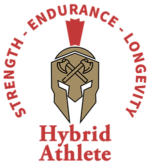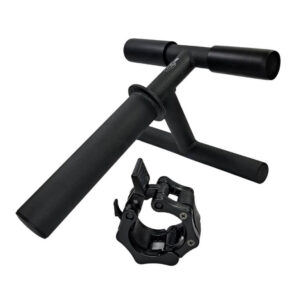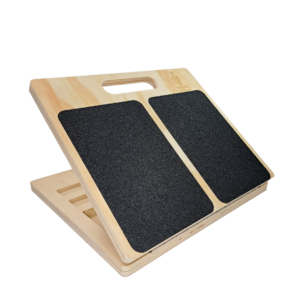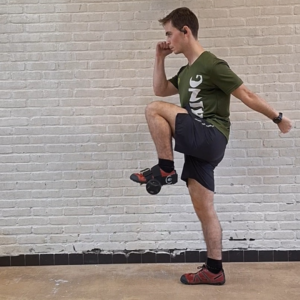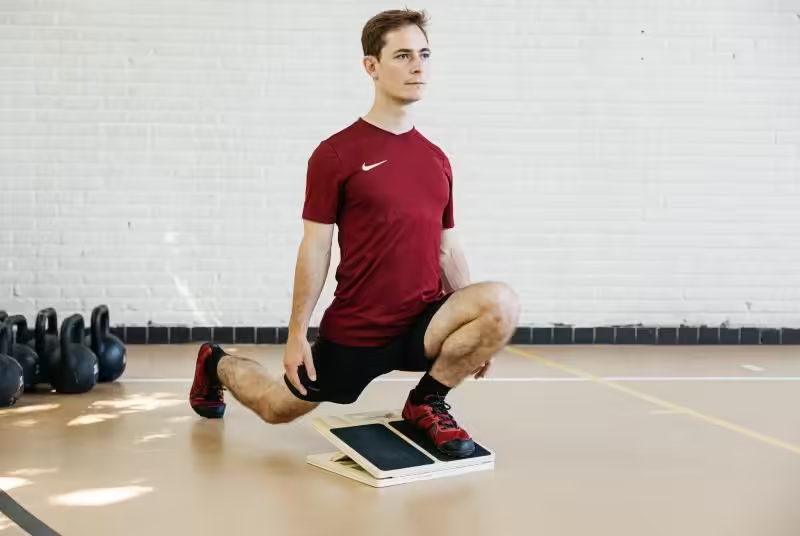
If you ask any knees-over-toes enthusiast, they will tell you that the ATG split squat is a staple of this training philosophy. And, they’d be right.
The famous KOT, aka knees-over-toes split squat is an exercise that builds mobility and flexibility in the lower body, next to strength and explosiveness.
We’ve talked about how different split squats compare, but now it’s time to talk about the king of this unilateral movement.
Table of Contents
What Is s Knees-Over-Toes Split Squat?
Even though it looks like a lunge, the knee-over-toe split squat has bio-mechanical nuance to it. It’s a unilateral squat that involves using the full range of motion (ROM). However, we can say that the primary focus is on:
- Ankles (dorsiflexion)
- Tibialis muscles (mainly the anterior head)
- Vastus medialis oblique (VMO) strength
- Posterior chain (mainly the glutes)
KOT Split Squat Benefits
Now, knowing that the KOT split squat targets the more intricate muscles of the lower body, it would take more than a blog post to describe the benefits.
However, next to the development of the muscles involved, we can highlight the most important benefits of KOT split squats:
- Ankle mobility – the nature of KOT split squats makes you push your knees over your toes, utilizing the power of dorsiflexion
- Knee strength – by learning how to distribute the force evenly AND how to set your joints and muscles for a deep squat, you offload the force away from your knees
- Tibialis development – the KOT split squat targets this muscle exceptionally well to emphasize the knees over toes ability.
- Getting stronger in squatting positions – by teaching your body to carry the weight all the way to your ROM limits, your ligaments and tendons get stronger
- Injury prevention – again, by developing the more intricate muscles, you lower the risk of misuse, damage, and ultimately, the risk of injury.

How To Do Knees-Over-Toes Split Squats
Achieving a full barbell knees-over-toes split squat takes practice. For KOT beginners, doing it with body weight can be challenging, let alone putting extra weight on. So, it’s important to be patient and build your way up.
Here’s how to perform a knees-over-toes split squat:
- Unrack the barbell
- Split your feet – put your working leg foot about 2 feet (your feet) in front of you
- Brace your core, squeeze the back glute and “sink” into your front leg while keeping it upright
- Focus on the front knee and push forward through it
- When at the bottom, push through your heel and go back. Keep your torso upright!
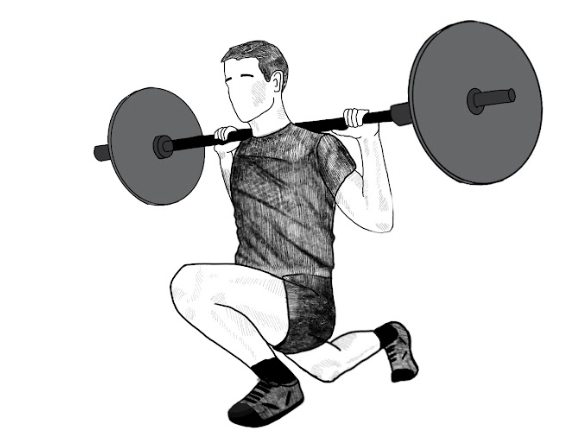
Kot split squat progressions
There are three main ways to help you get to a full barbell KOT split squat:
Assisted KOT split squat – use a stick to help you reach your full ROM
Dumbell/kettlebell KOT split squat – gradually add weight to build yourself up
Front foot elevation – you can make the split squat easier by elevating your front foot on a box. Just remember to decrease the elevation once you get used to it.
*keep in mind, with this type of split squat, there’s a huge difference in balance between the barbell and dumbbell variations. If it’s a huge leap for you, take a step back and build back again.
Everyone Should Be Able To Squat Deep
The knees-over-toes split squat looks challenging. What split squat isn’t, right?
However, out of all the variations out there, this one takes the crown of the most useful. A KOT split squat has the trifecta of being a good tool for hypertrophy, strength building, and mobility development.
Don’t miss out, and start building your body in a way that allows it to move in all directions AND be strong in stretched positions!
Get to a perfect kot squat with the best equipment:
GET THE BEST INJURY-PREVENTION TRAINING EQUIPMENT:
Above all, a storyteller. Then comes marketing, branding, writing music, powerlifting, and woodworking.
